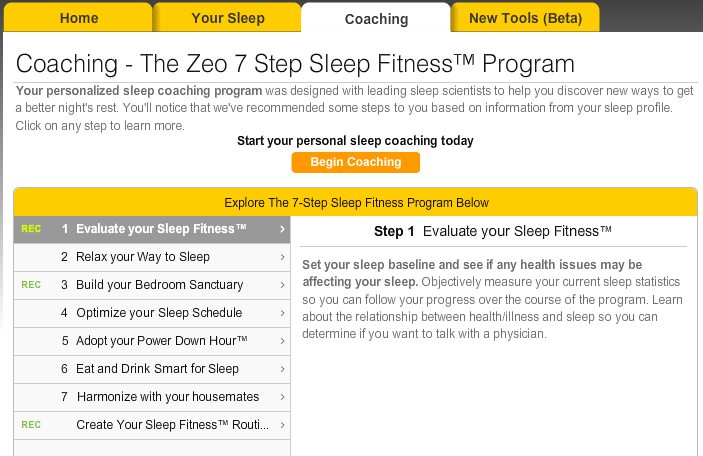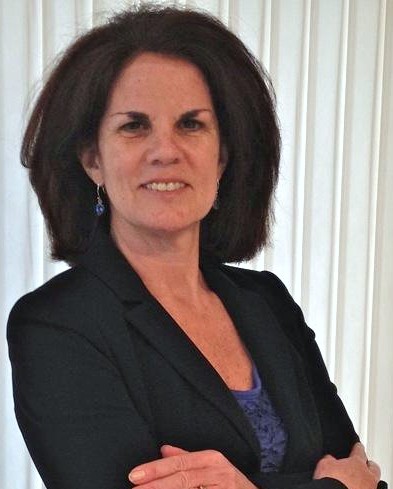Entries in educating consumers about health and wellness (50)
6 1/2 Secrets For Engagement from Top Consumer Driven Companies
 April 14, 2011
April 14, 2011 
My client recently revealed that he really valued the different perspectives that I bring, from consumers and competitors to companies inside and outside of healthcare. There is so much that we can learn from an “outside- in” perspective.
Last week, I led a panel at the Community 2.0 Strategies Conference and listened to engagement successes from the most innovative consumer driven companies in the World. Just like healthcare organizations, these companies are compelled to capture the mind -share and influence the mind -set of the incredibly busy and often overwhelmed consumer.
6 ½ Secrets For Engagement
As you review these consumer-centric examples, think about the healthcare opportunity that I have outlined under each one. What other ways can these success factors be leveraged to motivate engagement in your company?
1. Peer to Peer Influencers Are Powerful
Microsoft has a vibrant online community of MVPs who are “independent experts” leading discussions and sharing advice with their peers. Microsoft has set up a formal program with processes to identify, reward and transfer knowledge with these Influencers.
Healthcare Opportunity: Imagine ways to leverage the “Patient Expert” to encourage and support others in the community. This Expert knows the topics of interest, understands the issues facing these patients and can speak the patient’s language.
2. Education Builds Relationships
Verizon Residential has created an online community called “Room to Learn” which teaches consumers about the evolving set of technologies that they need in their home and how these technologies play together.
Healthcare Opportunity: With the expansion of the Patient Centered Medical Home, consider how we can educate consumers about technologies that will empower them from tele-health for chronic care management to technologies that support ‘Aging in Place’ for seniors and caregivers. After all, isn’t increasing self-management an important goal of healthcare?
3. From Crowd Sourcing to Friend Sourcing
Trip Advisor shared their move to integrate their site with Facebook and bring consumers travel reviews from their own personal network. Although they are still evolving this capability, Trip Advisor understands the value of trust in the decision making process.
Healthcare Opportunity: When consumers participate in a coaching program, think about the role that their personal network can play in supporting their goals and celebrating their achievements. Although the consumer may interact with their coach a few times during the week, their personal support network is with them all week long.
4. Rewarding the Right Behaviors
Dell, a veteran in the online community space, is working hard to define behaviors that they want to reward. Dell is most interested in recognizing “helpful” behaviors. For example, one community member shares advice with another which results in a positive behavior.
Healthcare Opportunity: As employers look for ways to take their company- wide social challenges to the next level, imagine finding ways to reward team captains and co-workers who contribute to the healthy success of their fellow employees.
5. Employee Engagement Leads to Consumer Engagement
Sega video games has created a “Wall of Awesome” which posts feedback, input and overall inspiration from their customers. As Sega employees continually visit this wall, they are more motivated to participate in the community and spotlight these members in the online community.
Healthcare Opportunity: It takes a company to support a healthcare consumer. With care management so fragmented, employees often do not hear about the ways their co-workers have helped or about the appreciation that some have received. Imagine having an online intranet area where employees share these stories with their colleagues and bring the inspirational stories back into the online community.
6. Content Driven Before Channel Driven Engagement
Over time, Dell has taken a more holistic view of driving online engagement. Their approach entails starting with their content, of which 40% is “user generated”, and then thinking through how the different platforms (e.g. Facebook, Twitter and other public and private Dell communities) can use this information. Dell is most interested in what content is being consumed and how their customers are interacting with their company through these different online touch points.
Healthcare Opportunity: Innovative healthcare organizations enable consumers to set both their channel and content preferences. Instead of continuing to add content providers (which are the same information sources being used by their competitors), these healthcare companies are spending more time evaluating, organizing and highlighting unique content generated by their community members. This “user generated content” delivers a valuable and differentiated experience for the consumer.
6½ Integrated Content and Community for Impact (Extension of # 6)
NBC shared the redesign of their iVillage women’s community where they connected their content, member community and experts to motivate much higher participation. Now in one place, members can now read an article with comments from their community members and experts.
Healthcare Opportunity: Instead of forcing consumers to find content across separate online spaces, leading healthcare companies are starting to connect these content sources to present different perspectives on the health issue from various authorities both personal and professional. As a result, consumers are spending more time exploring the information to support their health decisions.
Although you may not have the budget to fund all of these engagement opportunities, you can learn from the successes of other consumer driven businesses. With this new insight, your company can make better investments in the game of consumer engagement which will result in a win-win.
Injecting Consumers Into Your Channel Engagement Strategy
 March 25, 2011
March 25, 2011 
While attending health care conferences, I often hear presenters describe their pilot programs and share what they have learned from new and expanded engagement initiatives delivered through online (social communities, social media, portal), mobile phone, telephone or email channels.
Many companies are in the “experimentation” phase. They are determined to discover the effectiveness of each channel in generating consumer awareness, interest and participation in their health and wellness.
When discussing their channel plans, I tend to hear companies say “once we have learned about how the channel can be leveraged, we will be ‘operationlizing’ it into our programs”.
During my conference panel last week on multi-channel engagement, I emphasized the importance of incorporating an interim phase to “Consumerize” the channel strategy before moving into the operations phase.
“Consumerizing” entails understanding the needs of each priority consumer group or segment (e.g. adult patients with diabetes, children with asthma) and determining how mobile for example can be utilized with other channels to meet their needs. Specifically, companies need to determine the “role” that each channel plays such as enable access, educate, motivate, guide decision making, deliver emotional support or help with care collaboration.
With a clear understanding about the set of channels and how each one brings value to the consumer segment, providers/plans/employers can effectively orchestrate consumer engagement for maximum results.
Channel Challenges
This is not easy to do. Channels are converging. For instance, consumers are using their desktop to upload pictures into a social community and then getting messages on their mobile from the community. They are receiving an email with a link into the online portal for their lab test results. Consumers are viewing mobile messages about preventative care with an option to click to connect for appointment scheduling.
With this convergence, the channels are becoming intertwined and integrated which brings complexity to planning, implementing and evaluating channel initiatives.
- Channel Planning: Many organizations have separate committees for each channel (e.g. mobile, online/social media) planning their own strategy. Instead of looking at one channel, organizations need to take a more strategic and holistic view by starting with a consumer segment and understanding their channel preferences and behaviors in order to define the role that each channel can play in meeting their needs.
- Channel Implementation: Companies tend to spend more time thinking through the internal processes for sending content over these channels and not enough time thinking about how the consumer receives and interacts with it. They need to consider the information that is presented and captured within each channel and how it is shared across channels. All channels must be connected and synchronized to deliver the best consumer experience.
- Channel Evaluation: Although many organizations are still looking at engagement one channel or campaign at a time, it is essential to evaluate the effectiveness of the channel at the consumer segment level. Each channel needs to be evaluated based on the role it was designed to play for that specific segment.
Consumer- Centric Channel Strategy
Companies outside of the health care industry have a big head start. They have an established consumer segmentation approach. Consumer centric businesses in the financial services and hospitality industries are overlaying their channels onto their segmentation to deliver a relevant and meaningful consumer experience. These companies are also focused on driving consumer engagement. A colleague at a large financial services firm told me about the “O2O” trend and how they are focusing on optimizing the “online to offline” experience (e.g. using targeted social media to drive card members to an event).
There is so much that health care organizations can learn and they are beginning to look outside of the industry for new strategies. Health care companies are starting to realize the powerful role that new channels and approaches can play in motivating consumers to take on more responsibility in managing their health and wellness.
Data Driven Empowerment for Better Sleep and Health
 February 16, 2011
February 16, 2011
 While many companies are busy putting new online health resources and tools in place, Zeo is laying out the path to engage and empower consumers through social and mobile technologies and personalized information and education.
While many companies are busy putting new online health resources and tools in place, Zeo is laying out the path to engage and empower consumers through social and mobile technologies and personalized information and education.
Zeo’s sleep management solution helps consumers get better sleep by providing a view into their own sleep behavior, delivering expert education and leveraging the wisdom of the crowds. Sleep is not a ‘nice to have’. Sleep is a ‘need to have’. Studies have shown the link between sleep deprivation and its impact on productivity and health problems such as obesity and high blood pressure.
How is Zeo designing their data driven path to attract and engage consumers?
Awareness
In collaboration with Julien Smith, NY Times best seller author, Zeo has developed and distributed the “Sleep is Awesome” infographic to wake up the world to benefits of getting more sleep. The graphic is informative since it has facts about problems associated with sleep and shows how sleep varies by age group and gender. Zeo is spreading awareness about sleep virally across personal networks through Twitter and Facebook.
Education
Through the Zeo Product. I had an opportunity to try the Zeo sleep monitoring system. When I took the clock display out of the box, I remember thinking that I already have an alarm clock so why do I need another one? A few days later, I could not wait to bounce out of bed and seem my ZQ score (e.g. quality and quantity of my sleep) and how long it took for me to fall asleep. After reading an article on “7 Sleep Stealers”, I made improvements to my sleep environment to move my ZQ score up and time to sleep down. Zeo has also built their sleep coaching platform (see the blog visual) on these 7 steps to sleep fitness and recommends personalized education based on my profile.
Through Social Community. Zeo has recently launched their community which is currently in “forum” mode. The forum participants have a strong motivation to learn how to manage their sleep. Some are experimenting with the use of napping in place of or in addition to their current night sleep. Others are sharing strategies for maximizing their deep sleep. Zeo will be bringing in sleep experts to further educate the community.
Through Mobile. Last Spring, Zeo launched the first version MYZeo iPhone app which displays ZQ score charts, a daily night graph and a Personal sleep trend report showing changes in sleep patterns. Zeo is planning mobile enhancements to help consumers make better lifestyle decisions throughout the day in order to sleep better at night.
Insight
In November, Zeo partnered with Digifit which has health and fitness tracking with heart rate monitoring and Withings with their digital scale. With this partnership, sleep data, exercise data and weight data are brought together at the individual level through a “Dashboard of Healthy Living” SM .
Zeo is partnering with consumer- centric health sites such as DailyBurn to bring consumers their own aggregated data.
This is an emerging opportunity. Think about how other stakeholders can benefit. What if health coaches and clinicians could get a more holistic view into the consumer's activities of daily living and use this information to guide and engage the consumer?
Imagine how self- management tools can enable the consumer to interact with their aggregated data to support health decisions, set goals and manage their health.
There is tremendous value in health and wellness information that is aggregated and accessible by consumers and the many stakeholders that are supporting them.
Have you seen my post on “Follow the Value Brick Road” with the benefits of playing the aggregator role with all this consumer data?
Multi-Channel, Multi-Touch Approach to Maximize Member Engagement
 January 4, 2011
January 4, 2011  Innovative health plans are experimenting with an expanding set of marketing channels to motivate members including mobile and social media. They are getting smarter about synchronizing these touches for maximum member response.
Innovative health plans are experimenting with an expanding set of marketing channels to motivate members including mobile and social media. They are getting smarter about synchronizing these touches for maximum member response.
In addition to staying aligned with their members’ evolving needs, Plans must reach members where they are, in a way that is ‘meaningful’ to that member to motivate healthy outcomes.
During this moderated panel discussion, you will learn how Plans are:
- Understanding the consumer’s changing behavior in this social and economic environment
- Synchronizing their segmentation and personalization strategies across the communication channels
- Testing new media and mobile approaches to build member loyalty
- Delivering consumer education to address member confusion with plan and care options
Moderated by Sherri Dorfman, CEO & Consumer eHealth Engagement Specialist, Stepping Stone Partners
Panelists:
- Molly Goins-Cox, Head of Member Experience, Aetna
- Kevin Riley, VP of Innovation and Consumer Health Solutions Group, BCBS of Florida
- Mark Scrimshire, Director of Internet Channel Strategy, CareFirst BCBS
Employee Engagement Series: Motivating Through ‘Comparative Data’, ‘Messaging’ and ‘Educational Information’
 December 15, 2010
December 15, 2010
 Shape Up The Nation Comparative Data
Shape Up The Nation Comparative Data
According to Hewitt Associates’ survey with employers, A Road Ahead- Emerging Health Trends 2010, “changing employee behaviors related to health (e.g. encouraging employees to live healthier lifestyles and manage chronic conditions) will continue to be top of mind for employers over the next several years”.
Medium and large employers are evaluating different cost effective approaches that leverage technology to engage employees in their health. One approach that has generated results at the work place is social competition. Employees that participate in social competitions between co-workers and other companies gain the support and encouragement from their teammates to realize personal benefits such as getting more exercise, eating healthier and losing weight.
GTECH, a global technology company with over 3,000 employees in the U.S., piloted Shape Up The Nation’s platform back in 2007 in their headquarters office in Rhode Island. They noticed their employees were actively participating in the program and decided to roll it out to all U.S. employees located in 24 states the following year.
“Our employees tell us that they like to have a structured program with the option of participating in any of the three options (e.g. weight, exercise and nutrition) with the team aspect”, explains Leo Perrone, Director, Employee Benefits at GTECH Corporation.
Through the technology, employees can track and monitor their progress. “What they really like is the comparative information because it motivates them to strive harder, serves as positive peer pressure and it helps the team captains to send out motivational messages”, emphasizes Perrone.
In fact the team captains are an essential piece of the social competition. GTECH recently had a meeting with their team captains to share best practices and make sure they have the tools that they need.
Team captains regularly send out messages to encourage their teammates to try harder together and to congratulate them on their past efforts. Employees also send virtual ‘high fives’ and messages of support to their teammates.
Perrone discussed the employees’ response to the nutrition information that was tested in the platform this summer. “Our employee loved it. They entered in their meals and saw the calories, fat, protein, carbohydrates and sugar breakdown for the foods they are choosing. Our employees became more aware of what they are really eating on a daily basis”. One of GTECH’s benefits for employees is the option to participate in six nutritional sessions each year. We agreed that the nutrition information from Shape Up The Nation’s platform would be valuable to share with their nutrition educator for further insight.
GTECH plans to continue with this social competition approach. “This is a foundational program for us since it makes a difference in the personal health of our employees and it also helps with team building. Our employees get to know each other through these competitions and this helps our business” concludes Perrone.
More on employee engagement as the series continues...
Have you seen "Challenge Me" as an engagement driver?


